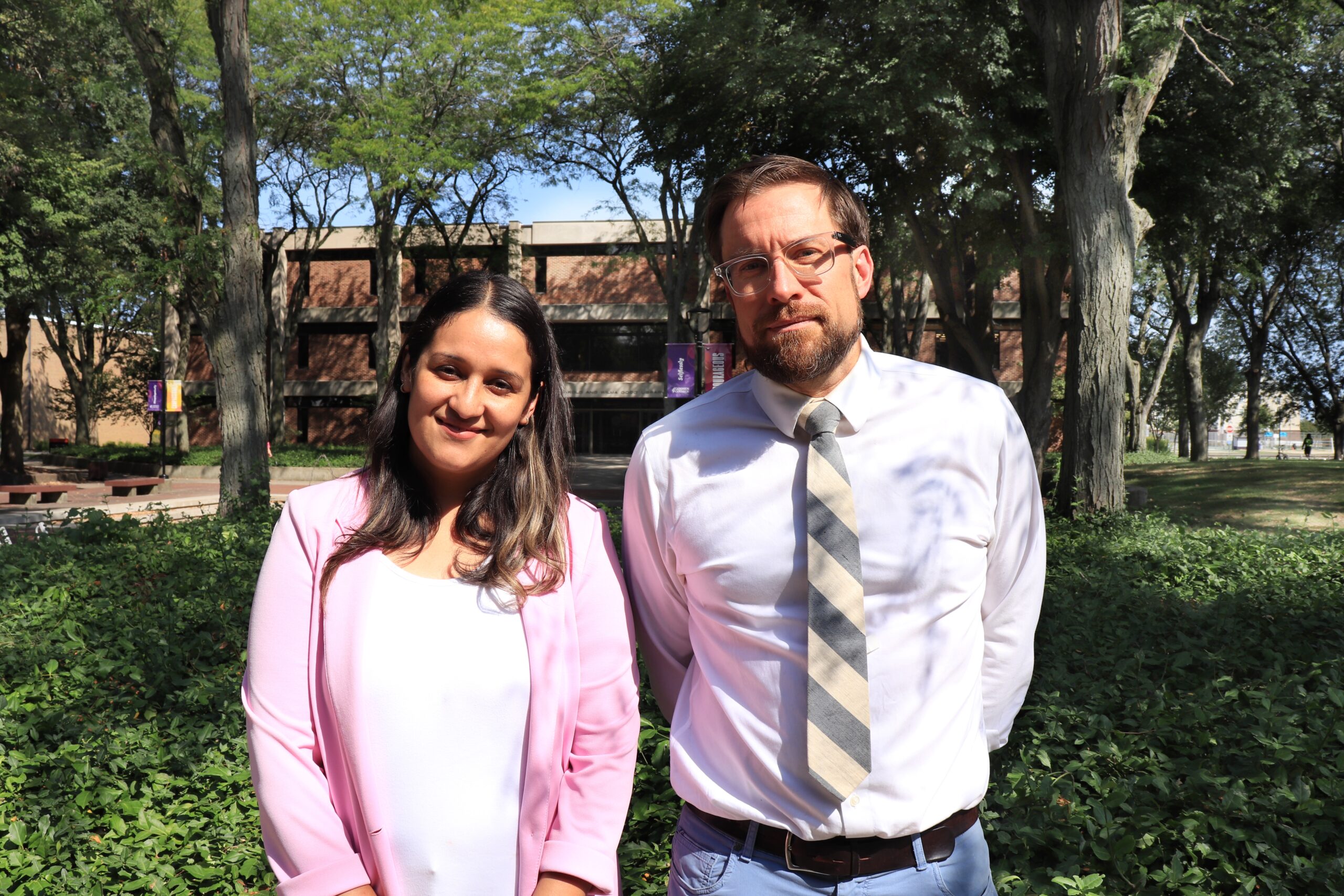Goshen College has implemented a new section of academic voice, one that is open to a small selection of Hispanic English Language Learners (ELL). The class retains the same curriculum, but is taught by Spanish-speaking instructors; Robert Brenneman is the professor of record, with Areli Bautista serving as a teaching assistant. The class is composed of 14 first-year students.
In the past three incoming classes, 20-25 percent of GC students indicated on their college application that Spanish was the language they spoke at home.
—
“From time to time when we’re working one on one with students, we’ll switch to Spanish,” Brenneman said. “Sometimes just to make sure that they understand, or other times just to make communication a little easier.”
The class was implemented with support from the $3 million Developing Hispanic Serving Institutions grant, which was awarded to Goshen last September. Jan Kauffman, associate dean of student success, is serving as the project director for the DHSI Title V grant.
“The grant,” Kauffman said, “is really geared towards building capacity on campus to not only serve Hispanic students, but to serve what would be traditionally, historically marginalized students… to help create more opportunities and persistence for students who have not in the past persisted to graduation.”
In the past three incoming classes, 20-25 percent of GC students indicated on their college application that Spanish was the language they spoke at home. That percentage has swelled to 30% this year, marking a 24-student increase from the previous year. These students speak English to varying degrees.
Even those who already speak English can have some difficulty in adapting to different English-speaking settings. Víctor Vegas, a fourth-year music major, moved to the U.S. for high school.
“It was weird to adapt to, coming from, I speak English in an all Spanish school, to, I speak English in an all English school setting,” Vegas said. “Because I had more confidence when I was speaking in a school setting in Venezuela. But when I moved here, I would constantly second guess myself because I would get a lot of, ‘hey, can you repeat that again?’”
Entering this school year, an especially large class of incoming freshmen necessitated an increased number of academic voice sections. Academic voice is a core class taken by most GC students to practice academic writing and speaking. The need for new sections, an increasing ELL student population and the grant money, provided GC with a chance to start this new section.
“We have for a few years now been wrestling with how to better support our English language learners,” Kauffman said, “And [we] haven’t always done a great job of offering support. And so we started to have a few conversations… about what it might look like if we needed another section to do something that would support students whose first language isn’t English.”
Vegas noted that “I feel like for [a] college setting, I wish that I could see more of an instructor whose second language is English.”
Areli Bautista, who assists Brenneman in teaching the class, serves as the connections advisor for first-year students. Her personal experience speaking English as a second language gives her a connection point to students at GC with similar experiences.
“It started with learning about the opportunity for ELL students,” Bautista said of her participation in the class, “and providing that space for them to have a stronger opportunity to feel connected and a sense of belonging, with a commonality or similarity in English, being their second language.”
Several Hispanic students at GC had some initial skepticism about the program; Vegas experienced classes that were geared towards ELL learners in high school that he felt were overly simplistic and isolating to its students; he worried about whether students had much agency in taking the class. “People who have English as a second language in high school,” he said, “tend to be placed in those classes automatically, whether or not they want it or not.”
Miguel Pineda Vasquez, a third-year music major, shared some similar concerns about separating these students from their peers, saying that “If they are teaching the same curriculum, why not just write the instructions out in Spanish on Moodle or offer Spanish tutors? Why do they need to go the extra step and pull those kids out specifically from their classrooms?”
The section this year is an experiment; feedback from students will help to determine whether it continues in future years. In providing this kind of community, the instructors hope to empower students to learn and grow together.
“When I was learning the language,” Bautista said, “I knew that I could tap into different resources and my own determination and learning how to write and not being shy or afraid to speak [English] regardless of an accent. But that determination can be empowered by having that sense of community with one another. And we’ve seen that; we’ve seen the interactions in the class so far and there’s laughter, there’s humor, there’s peer to peer support.”
Learning a second language can be difficult, but it provides a unique skill set that deserves to be celebrated.
“We want them to know that being bilingual is an asset,” Brenneman said. “You’ve got this special toolkit that you don’t need to put away for four years. Hang on to it. It’ll be useful.”



